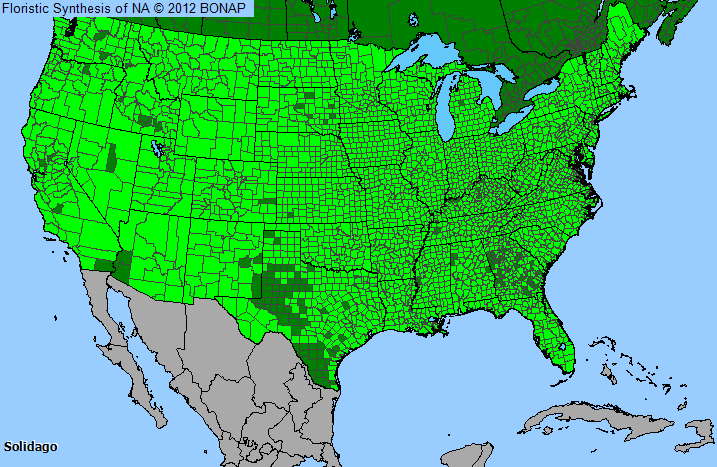
Plant Allergy Overview
Allergenicity
Mild
Pollen Season
Spring to Fall
Type
Weed
Sub-Type
Perennial
Allergy Information
Goldenrod is in the same family as the highly allergenic ragweed, and has also been known to cause allergic reactions. However, unlike ragweed, goldenrod is insect-pollinated, and does not typically send much pollen into the air. Individuals who suspect they have goldenrod allergies may also want to consider grass and ragweed as the true cause of their symptoms, since those two are heavy pollinators, and highly allergenic.
Genus Details
Goldenrods have an erect, woody, seldom branching stem with simple, alternate leaves. The flower heads have a wide variety of terminal clusters. The tiny flower heads are yellow, have perfect disk flowers and pistillate ray flowers. Goldenrod is one of the showiest of the late season wildflowers. The flowering heads are often used in making yellow dye. It is found in fields, pastures, along road sides and some cultivars are commercially sold and planted in gardens.
Pollen Description
Baccharis pollen grains are oblate-spheroidal to prolate-spheroidal; the amb triangular, 3-4 lobate and 3-4 colporate. The sexine is generally thick, tectate, and has long spines. The intine is thin but slightly thickened below the apertures. Solidago has pollen grains of the Baccharis-type.
The grains are typically 20-30 micrometers in diameter.
Genus Distribution

The shaded areas on the map indicates where the genus has been observed in the United States.
 - Native, observed in a county
- Native, observed in a county  - Introduced, observed in a county
- Introduced, observed in a county  - Rarely observed
- Rarely observedSpecies in Goldenrod Genus
Allergens & Plants Search
Enter a full or partial species name to find more information on one of over 1,200 potentially allergenic plants.
For example, you can find chenopods searching on "cheno"

